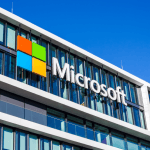Charles Nahadebian CEO of VideoKall Pitches ClinicStop on ‘Ignition Pitch Competition’ at Converge2Xcelerate | ESG News – Boston, MA
Charles E. Nahabedian, CEO of VideoKall pitches ClinicStop at Converge2Xcelerate Conference (Boston, MA)
HIGHLIGHTS
- Clinical Cabins provide inexpensive, efficient, 24/7 availability, and broadband communication to consumers
- Clinical Cabins: Virtual visits with live nurse practitioners or doctors
- The clinical cabins self-sanitize themselves and all diagnostic equipment
FULL COVERAGE
INTERVIEW TRANSCRIPTS: Charles E. Nahabedian, CEO of VideoKall
Charles Nahabedian – CEO, Videokall: 00:00
My name is Charles Nahabedian and the name of my company is Videokall. Clinic Stop is the robust AI robotics telemedicine platform. Let me tell you a short story. My parents came from Armenia as young adults to avoid the genocide. I am one of eight children and I was born and educated right here in Boston. My mom did not drive. Every time we got sick, dad would close the store and drive us to the next town to see the family doctor. Even then, I knew that must be a better way to get healthcare. That is why Videokall was born. Let’s just skip that one. Today, providers and customers have challenges. Hospitals have financial pressures, especially in treating seasonal and chronic illnesses. Physician shortages are expected to continue to rise. There are more patients with chronic illnesses. Average wait times are about 18 and a half days on average and patients are not satisfied and premiums, they’re off the chart. The solution is Clinic Stop.
Charles Nahabedian – CEO, Videokall: 01:35
The next generation platform that facilitates high quality medical care for minor and chronic illnesses globally. As a patient, you log in your account on any device. Cabins would be located conveniently in your neighborhood. You went to the cabin for an on demand virtual video visit with a live medical person. You’re guided to use the appropriate medical, clinical grade devices. A visit is comparable to seeing a nurse practitioner in a doctor’s office or clinic. After the diagnosis, a course of treatment and perhaps a prescription are provided an after you leave the cabin and the equipment are sanitized automatically and your health records are upgraded, updated to the hospital system. The fee is only expected to be $65 versus $90 for a mini clinic visit. The instruments are remotely controlled and directly monitored. Connection to the healthcare provider is through a flexible, secure broadband network that can use satellite, internet or cellular service and there are benefits to health care providers.
Charles Nahabedian – CEO, Videokall: 02:57
A call center could have a few nurse practitioners serving many more cabins, 24/7 alleviating the doctor shortage. Profitable revenues are provided and they achieve lower operating costs for meeting. This segment of the market is better market coverage, better penetration, and now competition and providing these services, referral for patients needing more medical equipment, excusing, moving medical care can also be provided. So what’s our secret sauce? All of the features in this platform you see listed allow us to eliminate the need for a physical attendant at the cabin. Our broadband network facilitates the use of nurse practitioners. Next slide. The telehealth market is growing rapidly. We do have competitors. There are the open kiosks where you can get your blood pressure for example, but we have a closed cabin and a full array of vital signs instruments. Or you can call using an app to wait for a callback for a doctor’s advice.
Charles Nahabedian – CEO, Videokall: 04:16
They use patient provided data in clinic stock provides directly read real time measurements and will comparable but less expensive than a mini clinic. And even after all this time, CVS only has 1,100 clinics for their 10,000 stores. Next slide. Our revenues are from sales, leases, maintenance contracts, and recurring patient revenue. The annual costs for the cabin is about half the operating costs of a mini clinic. Next slide. In two verticals, in five years we expect revenues of $150 million and the opportunity is tremendous because we’re looking at other market segments. Next slide. The initial funds of 1.2 million at this point are needed for beta testing and customer trials and with series A of 5 million will be operational in nine months. We’re excited about our progress. We have a prototype, 80% of our software done and a bunch of patents. We have an LLI for a trial and we have partners for other segments. Thank you.












